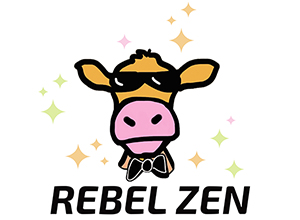(Or “The Art of Subtly Communicating the Non-obvious Value of Art”)
Unlike my friend Paul, I would be a terrible person to phone up should you be in need of some kind of fridge repair service. You can see from his business page that he specialises in making your old Samsung fridge do what it is supposed to do. On the other hand, I look at fridges and what I see is a canvas going to waste. And then I start thinking about paint which, while colourful, isn’t very good at chilling that Pinot Gris you’re looking forward to imbibing.
And therein lies the artist’s dilemma: your utility is very often non-obvious.

Whether you’re a writer, a painter, a musician or something less obvious, like a post-it note artist, (which is actually a thing, I just discovered), you’re in a way lucky, because you naturally observe the phenomena of life, the stuff that exists all around us, and you think about how you can bend and shape it into something interesting. It’s a state of mind that some people pay good money for. Everything seems trippy; like “what’s the deal with all this stuff?” trippy.
So the good news: being an artist by nature makes boring things fun. Standing at a bus stop isn’t nearly as dull when you have the capacity to begin orchestrating an avant-garde musical piece in your mind using the rhythm of passing cars on the wet road as inspiration.
The bad news: it is, to quote Oscar Wilde, in some ways, “quite useless”.
The arty brain isn’t very good at fixing fridges. It doesn’t code apps. It doesn’t formulate public policy and it sure as hell wouldn’t know how a TV works.
So are all artists useless to society then?
Of course not. If they were, my friend Jimmi wouldn’t be able to work full time painting commissioned dog portraits. And Damien Hirst (the formaldehyde shark guy from the ’90s, remember him?) would not be worth many hundreds of millions of dollars.
What I Think About When I Think About Value
People don’t give you money unless you provide some kind of value. The thing about artists as opposed to traffic management companies or your local plumber, is that the value that artists provide is not as obvious and certainly not felt as keenly as a backed-up toilet. Nobody wakes up of a morning with a burning desire to go out and buy a contemporary art installation. They do however, wake up with a burning rash and immediately hot-foot it to the local pharmacy to purchase some ointment.
I am not writing this essay to tell you how to make money making art or music or whatever. I have and do sell some creative works sometimes, but I can’t hold myself up as some Internet Art Commerce Guru (nor do I want to). But the thing that interests me is value and how it pertains to creative works. What is the value to the artist of making art? What is the value to the “consumer” of the creative works?
Here and there I witness moaning that “people don’t value art” or “nobody wants to pay for music”. However, what’s forgotten is that actually, people DO pay for art. They DO happily enrich many musicians and painters and other types of artists. But they do it when they perceive that they are receiving value in exchange. And it is not a very conscious process.
People don’t think “Wow, I get SO MUCH VALUE out of Nick Cave, his music and what he represents to me in terms of culture, life and my self-identity within those eco-systems, that I think I will exchange money for concert tickets and tell everyone in my Facebook feed about it in order to explore and promote these self-affirming concepts!” … and yet this is exactly what is happening.
On a simpler level, people don’t consciously think “If I buy a framed print of this hipster illustrator’s work that I found at a maker’s market and hang on it on my wall, my friends will witness how truly cool I am,” … but they unconsciously think that. This is where the value inherent in the creative work exists for them.
Subtly communicating non-obvious value
So, the creatives that win, on purpose or by accident, facilitate a story that person (the customer) is telling themselves about themselves that they want to tell the world.
Meanwhile, a lot creative people simply view making art in the same way a surfer might view surfing: they do it because it feels good. And that is fine … but it is does not necessarily have any value to other people. And if it doesn’t, they will see it is as “quite useless”, and thus not line your pockets with silver.
So in a way, as an artist of various flavours, I kind of feel jealous of my friend the fridge mechanic. He no doubt has many business challenges, but subtly communicating the non-obvious value of what he does to the lady whose freezer is on the blink ain’t one of them.
On the other hand, how many people can compose multi-layered, prog-rock symphonies in their minds, complete with imaginary video special effects? When it comes to the bus stops of life, I’ll take that over tapping away playing “Kwazy Cupcakes” on my phone any day.
image credit: Lost At E Minor
